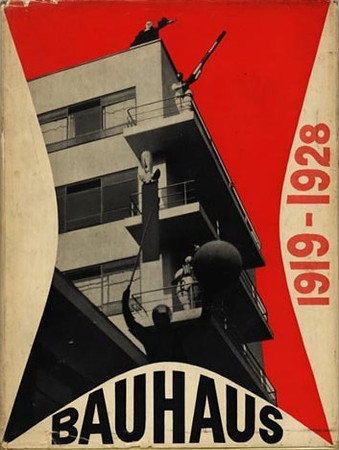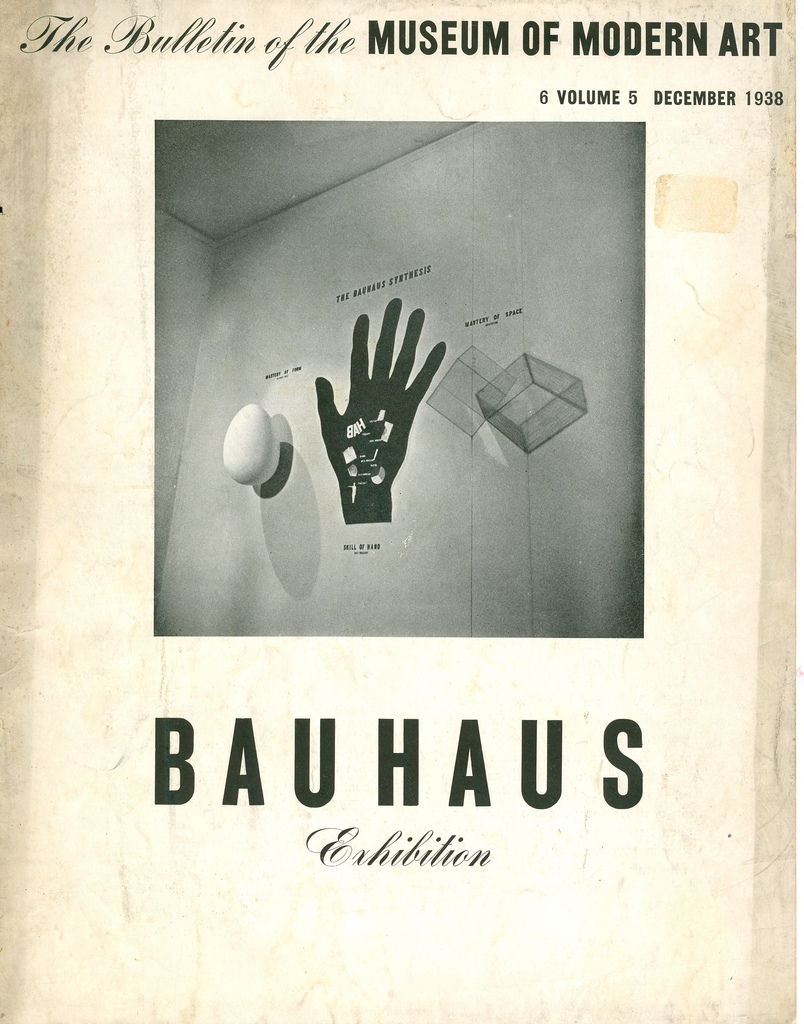Reyner Banham: Theory and Design in the First Machine Age, 2nd ed. (1960/1967)
Filed under book | Tags: · 1900s, 1910s, 1920s, aesthetics, architecture, art, art history, avant-garde, bauhaus, de stijl, design, design history, functionalism, futurism, history of architecture, industrial design, machine, technology

First published in 1960, Theory and Design in the First Machine Age has become required reading in numerous courses on the history of modern architecture and is widely regarded as one of the definitive books on the modern movement. It has influenced a generation of students and critics interested in the formation of attitudes, themes, and forms which were characteristic of artists and architects working primarily in Europe between 1900 and 1930 under the compulsion of new technological developments in the first machine age.
Publisher Praeger, New York and Washington, 1960
Second edition, 1967; Second printing, 1970
338 pages
Review (Robert Gardner-Medwin, The Town Planning Review, 1961)
Review (Dennis Young)
Review (Caroline S. Lebar, 2012)
Review (of the 2009 French edition, Hugues Fontenas, Critique d’art, 2010, in French)
Commentary (Gillian Naylor, Journal of Design History, 1997)
Commentary (Nigel Whiteley, 2005)
PDF (50 MB, no OCR)
Comment (0)Gennifer Weisenfeld: Mavo: Japanese Artists and the Avant-Garde, 1905-1931 (2002)
Filed under book | Tags: · 1910s, 1920s, anarchism, architecture, art history, avant-garde, collage, communism, constructivism, dada, expressionism, futurism, graphic design, japan, marxism, socialism, theatre

“The radical Japanese art group Mavo roared into new arenas and new art forms during the 1920s, with work ranging from performance art to painting, book illustration, and architectural projects. Hurling rocks through glass roofs and displaying their rejected works, Mavo artists held peripatetic protest exhibitions against the Japanese art establishment. Ultimately, Mavo’s work became a major influence in Japanese commercial art and had a pronounced and lasting impact on Japanese visual and political culture. This abundantly illustrated volume, the first book-length study in English on Mavo, provides a critical evaluation of this often outrageous and iconoclastic movement, tracing Mavo’s relationship to broader developments in modernism worldwide.
Gennifer Weisenfeld provides a fascinating look into Japanese popular culture by showing how Mavo artists sought to transform Japanese art in response to the rise of industrialism. They deliberately created images that conveyed the feelings of crisis, peril, and uncertainty that were beginning to characterize daily life. Their art often alluded to mechanical environments through the use of abstracted imagery such as interconnected tubular forms and shapes reminiscent of riveted steel-plate girders. Looking in depth at the art itself, the flamboyant personalities of the artists, and the cultural and political history of Japan in this interwar period, Weisenfeld traces the strategies used by these artists as they sought to reintegrate art into daily experience.
Weisenfeld thoroughly documents the links between Mavo artists and a wide range of other artistic and political movements with which they associated themselves, such as futurism, dada, expressionism, socialism, and communism. Capturing the restlessness and iconoclastic fervor of Mavo, Weisenfeld is the first to fully locate this modern Japanese artistic community within the broader historical and intellectual framework of international art of the early twentieth century.”
Publisher University of California Press, 2002
ISBN 0520223381, 9780520223387
368 pages
Reviews: Patricia Failing (caa.reviews), Alexandra Munroe (J Japanese Studies), J. Keith Vincent (J Asian Studies).
PDF (95 MB, no OCR, updated on 2017-7-17)
multiple formats (Internet Archive, added on 2017-7-17)
See also Weisenfeld’s essay Mavo’s Conscious Constructivism: Art, Individualism, and Daily Life in Interwar Japan (1996, 10 pp) and
Hagiwara Kyōjirō’s Death Sentence (1925).
Herbert Bayer, Walter Gropius, Ise Gropius (eds.): Bauhaus 1919–1928 (1938)
Filed under book, catalogue | Tags: · 1920s, architecture, art, art history, avant-garde, bauhaus, design, graphic design, industrial design, painting, photography, sculpture, typography


Bauhaus 1919-1928 remains one of the most valuable accounts of the Bauhaus school. The book was published in conjunction with the Museum Of Modern Art exhibition (December 7, 1938-January 30, 1939) and is a point-for-point record of actual programs and projects at the Bauhaus, prepared by Herbert Bayer under the general editorship of Walter Gropius and Ise Gropius and with the collaboration of a dozen other Bauhaus teachers — including Kandinsky, Klee, Feininger, Schlemmer, Itten, Moholy-Nagy, Albers, and Breuer. Rather than a retrospective history, it is a collection of photographs, articles, and notes prepared on the field of action. It may be considered as much a work of the Bauhaus as it is a work about it.
Includes work by all the Bauhaus faculty including Walter Gropius, Paul Klee, Wassily Kandinsky, Laszlo Moholy-Nagy, Marcel Breuer, Herbert Bayer, Josef Albers, Lyonel Feininger, Oskar Schlemmer, Hannes Meyer, Mies van der Rohe, Anni Albers, Otti Berger, Gunta Stolzl, Max Bill and many others.
The exhibition gave the first comprehensive review of the development of the institute under Gropius (no material from the later Bauhaus was shown). Preparation and technical arrangements were entrusted to Herbert Bayer, paving the way for his own emigration to America shortly afterwards. An accompanying Bulletin was a privilege, sent to members of MOMA. (Source)
Bauhaus 1919-1928
With a Preface by Alfred H. Barr, Jr.
Publisher Museum of Modern Art, New York, 1938
224 pages
via Joaquim Moreno, update via MoMA
The Bulletin of the Museum of Modern Art 6, Vol. 5 (Dec 1938): Bauhaus Exhibition
Publisher Museum of Modern Art, New York, 1938
8 pages
via David Levine
PDF (Book, 42 MB, updated on 2016-9-17)
PDF (Bulletin)

